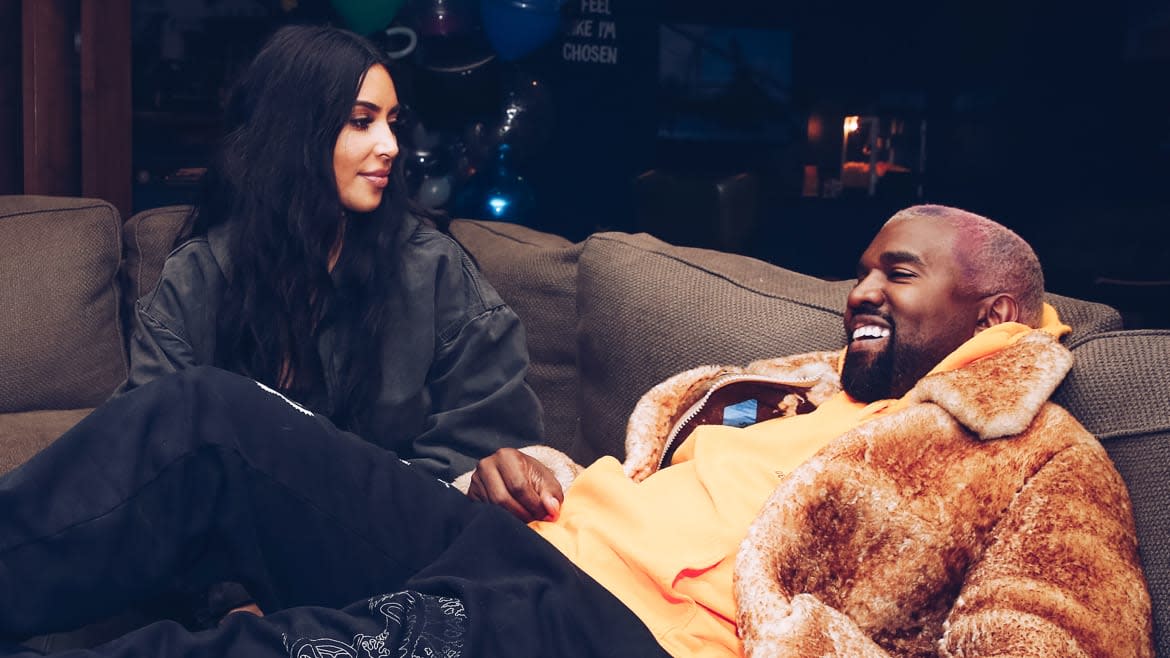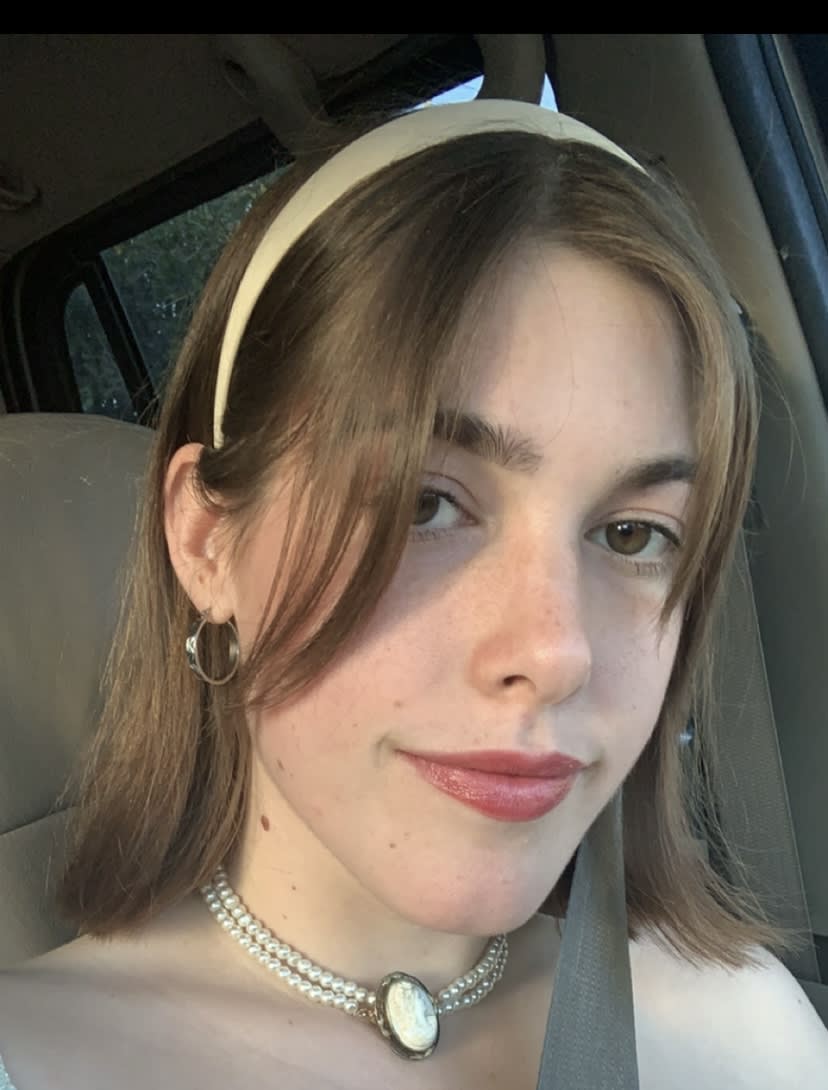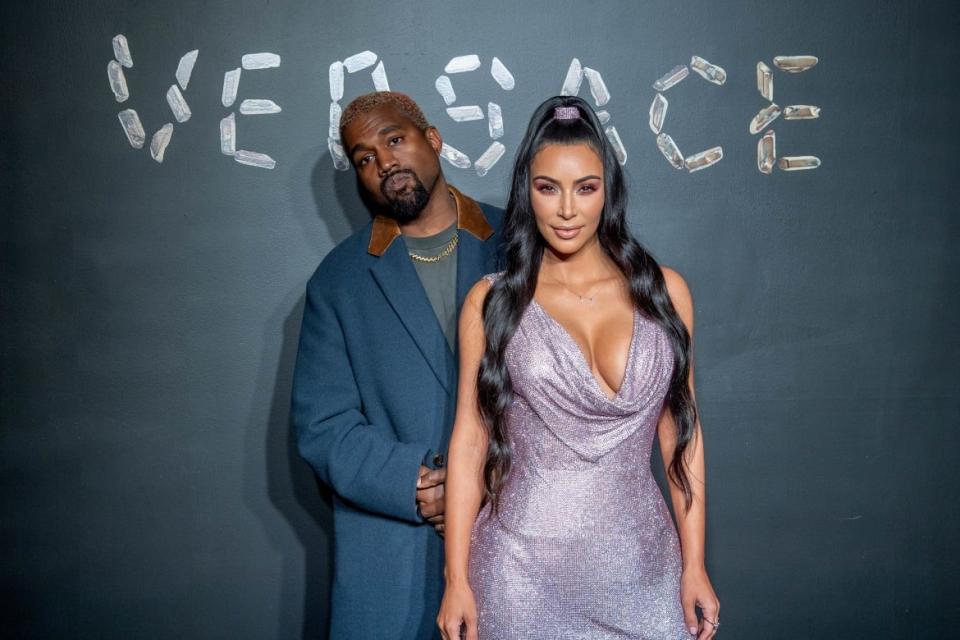Kim Kardashian and Kanye West Blew Up Her Childhood

- Oops!Something went wrong.Please try again later.
Most high schoolers’ woes are similar. Whether it be driver’s test anxiety or prom dress distress, teens share a core set of generational stressors—except for the students of Calabasas High School.
The youngsters of the infamous Los Angeles enclave navigate a very different set of adolescent issues: the cataclysmic fallout of Kim blowing up your secret salad spot on an episode of Keeping Up With the Kardashians, the trials of trying to win the affections of the child actor in your class, the difficulties of working with a diva dog in your school production of Legally Blonde. While those may not seem like quotidian high school experiences, 21-year-old Via Bleidner has done all of it, and more. Bleidner offers an unfiltered, thoughtful, and witty insider’s perspective on the suburb that birthed the Kardashian-Jenners and the Bling Ring, and examines the ugly underbelly of fame in her debut memoir If You Lived Here You’d Be Famous By Now: True Stories from Calabasas, from Macmillan.

Bleidner, a native of Woodland Hills (a porn hub of the San Fernando Valley), spent her entire young life receiving a Catholic education, where she was highly encouraged to sign a virginity contract and was sent to the principal’s office for “discriminating against gingers” after posting a meme on Facebook. The sole member of her insular middle school class to break away from her non-secular education, Bleidner was thrust into a world where teenagers drove BMWs home to their gated communities, minors got lip injections, and everyone who’s anyone had a SAG card. To cope with her new environment, Bleidner adopted the journalistic stylings of Cameron Crowe, determined to Fast Times her way through Calabasas High by chronicling every detail of her high school experience. “I was coming from a super sheltered Catholic school, so I felt really unprepared for high school,” she says. “So I figured that maybe I could separate myself from how scary it is to just be there.”
Kim Kardashian’s Bizarre Ties to Britney Spears’ Conservatorship Nightmare
The idea of the Valley Girl has existed in many iterations, the most common being a denim skirt-clad, gum-chewing, vocally fried mall-dweller, à la Julie Richman and Moon Unit Zappa. But since the dawn of the Kardashian-Jenner Dynasty, circa 2007, the Valley Girl has morphed into another being entirely, and her name is Kylie Jenner. Bleidner’s classmates would boast of Kylie sightings like Bigfoot and tracked her every move on social media. Being geographically close equaled being adjacent to her success. “She’s breathing the same air as us, she’s living in the same weather. When it rains in the Valley, a rarity in itself, we remember that Kylie’s probably staying inside today,” offers Bleidner. “The same rain that we’re looking at is gathering in her gutters, dusting her three-thousand-dollar lace-front wig when she pokes her head out the window to gauge the temperature.”
To the students of Calabasas High, the youngest Jenner was a mythical figure, a sheltered princess who descended from her guarded Hidden Hills tower in her matte black G-Wagon chariot to bestow her newest Lip Kit upon the plebeian masses. Kylie’s proximity in age to Calabasas students automatically pinpointed her as the most attainable of the KarJenners. “I know it’s stupid… but I feel like me and Kylie would really click. Like we’d definitely be friends,” Bleidner recalls a classmate confessing at a sleepover.

Author Via Bleidner
In the essay “Don’t Eat the Oranges,” Bleidner examines the makeup mogul’s social media facade of accessibility after being dared to knock on the door of Kylie’s estate. “I think of the way she addresses her fans on social media, like she’s a friend,” she writes. “That’s our girl Kylie. She’s one of us. She’s a Calabasas kid and she’s kicking ass out here, and if she can do it, if she can date rappers and wear Valentino and tweet all day and make money, we can too.”
Bleidner spends the latter part of the essay wondering what to say when you show up on the doorstep of someone who has been building an airtight persona since before she was even 10 years old: “What can you say to someone who has never known a normal day at school? Who’s never had to accept her own flaws? What can you say to someone who, quite possibly, could be the loneliest girl in the world?”
Bleidner hasn’t firmly made up her mind on whether or not Kylie is deserving of sympathy or schadenfreude. Though she admits that “nobody is giving her a philanthropy award,” Bleidner believes that Kylie’s physical transformation is a bizarre social experiment in a manufactured reality, a symptom of a much larger issue. “I think the fact that she looks so different from how she did when she was still a teenager has really, really frightening implications,” she says. “I think that most women have struggled with body image and I think having enough money to just do whatever you want and change that and look completely different is nightmarish.”
Kylie was far from the only member of her famous family to hold court at CHS. Bleidner’s high school years coincided with the Kimye Boom: the early years of Kim Kardashian and Kanye West’s relationship and marriage, where the rest of the family was suddenly catapulted to a higher level of fame than ever before. The students of Calabasas took note. “When a photograph circulates of Kylie perched in the passenger seat of a Bentley, her little pink wrist stacked with six Cartier Love Bracelets—worth $40,000 total—suddenly everyone at school except me, it seems, has a Love Bracelet or two of their own,” Bleidner writes.
The same commodification applied to Kendall’s penchant for ginger green juices, and when Kanye’s YEEZY “Calabasas” collection dropped, “the quad fills with students dressed in comically oversized sweatshirts marked with our high school’s name.”
Kanye’s impact on the school went far beyond influencing their makeup choices or juice purchases. At the tail end of Bleidner’s Calabasas tenure, reports began to swirl that Kanye had taken an interest in the school, despite the fact that none of the Kardashians or Jenners actually went there. “He wants to donate millions of dollars. Revamp the sports facilities. Redesign the football uniforms. Change the mascot from the Calabasas Coyotes to the Calabasas Wolves. Kanye West would like to effectively turn Calabasas High School into the first-ever Yeezy institution,” she recalls in her book.
Though, by the end of the year, Kanye’s reps walked out of CHS empty-handed, it is certainly an entertaining thought. “We were definitely disappointed because, for better or for worse, it would’ve been hilarious if Kanye was in charge,” Bleidner, who likes to imagine that West would have created a class on how to wear tiny glasses, tells me. “I think that more than anything, even though he was saying a lot of wild shit—I know he was super into MAGA at the time—despite that, I think solely for the meme factor, the campus was mostly disappointed.”
Though the Kardashians may have achieved a nearly supernatural level of fame, Bleidner does also remind readers that, occasionally, stars really are just like us. In “Stalling for Cub,” she recalls a friend bringing one of the most famous young actresses in recent memory as his date to their school dance. (While Bleidner does not name her, eagle-eyed readers may pick up on the hint that she drops in the text.) Students of Calabasas had a much different reaction than most would if a well-known actress walked into their gymnasium—they feigned ignorance.
“Collective awareness of proximal celebrity hovers in the air, thicker than the fog pumped in from rented machines. But because most Calabasas students earnestly believe they’re already famous, it’s an unspoken acknowledgement. Being ‘starstruck’ implies the forfeit of your own perceived stardom,” Bleidner writes. At the end of the day, she is reminded of the young actress’s humanity when she catches the overwhelmed starlet seeking refuge on her phone from the privacy of a bathroom stall—“the universal signifier for alone time.”
Bleidner’s tendency to unflinchingly report on her surroundings, even to the point of frequent self-deprecation, allows her to look beyond Calabasas’s botoxed veneer right into the ugly heart of fame. Her own high school theater experience, loaded with professional sets, handmade costumes, and an abundance of big spending donors, holds a mirror to the problem. For what it’s worth, Bleidner, who chose to attend Calabasas solely because of its theater department, believes that high school theater should be bad. “I think that your leads should be cracking on the big notes. I think that the costumes should be Party City. It builds character,” she tells me.

Kanye West and Kim Kardashian West attend the the Versace fall 2019 fashion show at the American Stock Exchange Building in lower Manhattan on December 02, 2018, in New York City.
The program, which boasted a 33,000-square-foot state of the art “performance space” that Bleidner nicknames “the $18 million sandbox,” is like a giant needle plunging into the vein of desperation. She recalls one classmate, Madison, whom she describes as “a scrapped Glee character,” that best fits the bill. “While I was placing my menstrual pads on the wrong side of my underwear, she was joining SAG-AFTRA,” she writes. Madison, whose combined desire to be famous and please her overbearing stage mother is objectively one of the most bleak, yet familiar characters of Bleidner’s tales. “Mrs. Whitney places her hands on her daughter’s shoulders, meeting her eyes in the mirror. Maddy is quiet. Next year, once she’s graduated, her mother will drive her to the plastic surgeon for a nose job.”
Despite spending her most formative years in one of the most iconic and affluent suburbs in the world, Bleidner is breathtakingly introspective and self-aware. She, of course, was forced to reckon with average high school problems. Between fighting with her parents, lack of scholarly ambitions, and an eleventh-hour panic that she would not get accepted to her top-choice school, UC Santa Barbara, Bleidner now finds herself on a completely different trajectory than where she imagined herself just a few years ago. But inking a book deal before she could legally drink doesn’t give her the ego trip that probably would have sent some of her fame-hungry contemporaries flying high. “I still feel kind of dopey sometimes. I’m sure everyone does,” she says, shrugging. “I think that there are certain aspects to growing up that are just universal, no matter where you are. I mean, Calabasas is just a little shinier, a little more glittery. But I think that anyone who had a coming-of-age will understand.”
Get our top stories in your inbox every day. Sign up now!
Daily Beast Membership: Beast Inside goes deeper on the stories that matter to you. Learn more.

